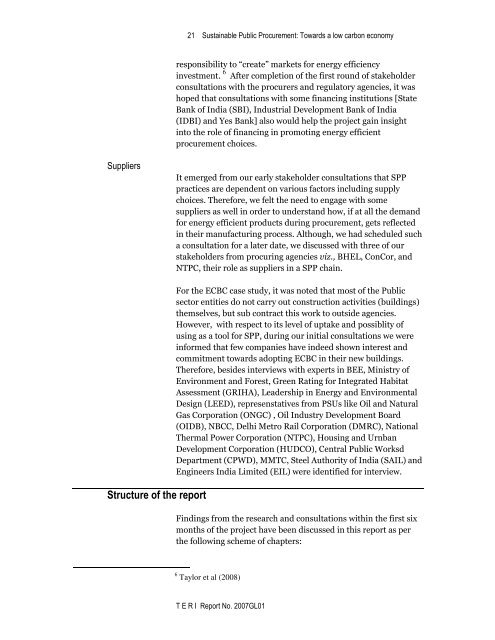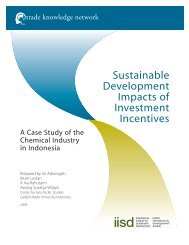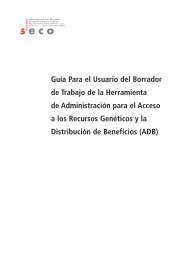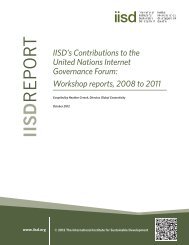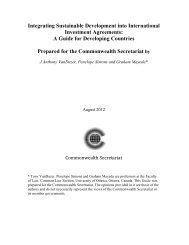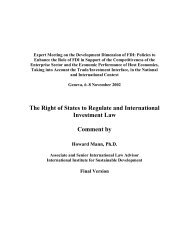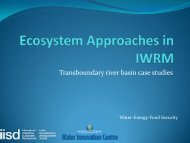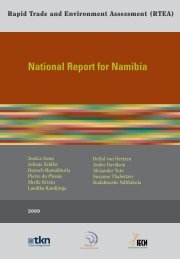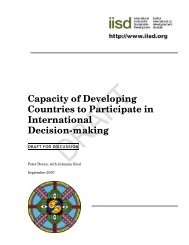Sustainable Public Procurement: Towards a lowâcarbon economy
Sustainable Public Procurement: Towards a lowâcarbon economy
Sustainable Public Procurement: Towards a lowâcarbon economy
Create successful ePaper yourself
Turn your PDF publications into a flip-book with our unique Google optimized e-Paper software.
21 <strong>Sustainable</strong> <strong>Public</strong> <strong>Procurement</strong>: <strong>Towards</strong> a low carbon <strong>economy</strong><br />
responsibility to “create” markets for energy efficiency<br />
investment. 6 After completion of the first round of stakeholder<br />
consultations with the procurers and regulatory agencies, it was<br />
hoped that consultations with some financing institutions [State<br />
Bank of India (SBI), Industrial Development Bank of India<br />
(IDBI) and Yes Bank] also would help the project gain insight<br />
into the role of financing in promoting energy efficient<br />
procurement choices.<br />
Suppliers<br />
It emerged from our early stakeholder consultations that SPP<br />
practices are dependent on various factors including supply<br />
choices. Therefore, we felt the need to engage with some<br />
suppliers as well in order to understand how, if at all the demand<br />
for energy efficient products during procurement, gets reflected<br />
in their manufacturing process. Although, we had scheduled such<br />
a consultation for a later date, we discussed with three of our<br />
stakeholders from procuring agencies viz., BHEL, ConCor, and<br />
NTPC, their role as suppliers in a SPP chain.<br />
Structure of the report<br />
For the ECBC case study, it was noted that most of the <strong>Public</strong><br />
sector entities do not carry out construction activities (buildings)<br />
themselves, but sub contract this work to outside agencies.<br />
However, with respect to its level of uptake and possiblity of<br />
using as a tool for SPP, during our initial consultations we were<br />
informed that few companies have indeed shown interest and<br />
commitment towards adopting ECBC in their new buildings.<br />
Therefore, besides interviews with experts in BEE, Ministry of<br />
Environment and Forest, Green Rating for Integrated Habitat<br />
Assessment (GRIHA), Leadership in Energy and Environmental<br />
Design (LEED), represenstatives from PSUs like Oil and Natural<br />
Gas Corporation (ONGC) , Oil Industry Development Board<br />
(OIDB), NBCC, Delhi Metro Rail Corporation (DMRC), National<br />
Thermal Power Corporation (NTPC), Housing and Urnban<br />
Development Corporation (HUDCO), Central <strong>Public</strong> Worksd<br />
Department (CPWD), MMTC, Steel Authority of India (SAIL) and<br />
Engineers India Limited (EIL) were identified for interview.<br />
Findings from the research and consultations within the first six<br />
months of the project have been discussed in this report as per<br />
the following scheme of chapters:<br />
6 Taylor et al (2008)<br />
T E R I Report No. 2007GL01


